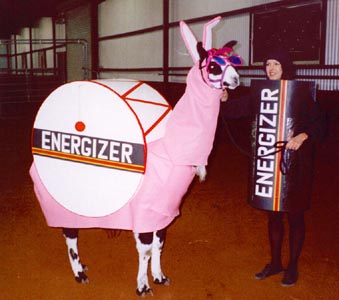
Posted on 11/12/2004 6:14:07 PM PST by neverdem
CAMBRIDGE, Mass.
PARENTS and doctors have long talked up the powerful properties of spinach.
Now an unlikely group has joined the chorus: researchers seeking to put more oomph in batteries.
Scientists at the Massachusetts Institute of Technology, the University of Tennessee, the United States Naval Research Laboratory and the Defense Advanced Research Projects Agency have found a way to harness the energy that plants use during photosynthesis to convert light to energy. They are using the process to extend the life of batteries in cellular phones, laptop computers and other portable electronic devices.
While the research is still at an early stage and scientists say commercial applications are years away, they add that the discovery chips away at the barriers between nature and technology.
"This really shows that there is a way of using biologically produced molecules and coupling them directly into applied electronic circuitry," said Barry Bruce, an associate professor of biochemistry and cellular and molecular biology at the University of Tennessee-Knoxville and one of the scientists working on the project. "This opens up a gateway for applied application, whether you want to make DNA wires or enzymatically based reactor cells."
This is the first time scientists were able to extract "something as fundamental as an electrical current" from photosynthesis, Professor Bruce said. While previous efforts have produced currents that lasted for a few hours, this group of scientists produced an electrical current that lasted for three weeks.
Earlier efforts to extract a current from photosynthesis failed because the proteins that capture energy from sunlight died without water. But Shuguang Zhang, associate director of the Center for Biomedical Engineering at M.I.T., was able to create a peptide detergent from amino acids that stabilized the protein and allowed it to channel energy.
Professor Zhang said the researchers liquefied spinach in a centrifuge. They extracted the protein and placed it, heads up and with spaces between each protein, on the chip. The peptide detergent was inserted in the spaces, and in an example of a process known as self-assembly, the two parts locked like fingers holding hands, Professor Zhang said.
The mixture was wedged between layers of plastic, gold and indium-tin oxide, a transparent semiconducting material. The resulting chips are durable and easy to repair: more protein can easily be injected if one stops working.
So far the chips have been built with only one layer of the spinach solution, and thus can produce a negligible amount of electricity. But scientists are planning to add additional layers to harness more power.
"It's like building a building," Professor Zhang said. "It gets more complete with each floor."
The device, which looks like a square microchip about a half-inch on a side with green liquid visible inside, won't be able to power electronics on its own, Professor Zhang said. Rather, it will wrap around a battery much like a leather case envelops a cellular phone, using the power of light to prolong the life of the battery.
"If we can put it on three dimensions, we can get some use from the juice," Professor Zhang said.
Scientists chose spinach both for its high chlorophyll content, which makes it dark green, and its low price. Green peas would have served as well, but spinach is cheap, plentiful and readily available. Scientists usually have to grow and fertilize their own fresh peas.
"You can buy nice bags of washed baby spinach, and you can get that year-round," Professor Bruce said.
Scientists also hope to use the chips for transistors and memory elements, according to Marc Baldo, a professor of electrical engineering at M.I.T. who worked on the project. Professor Zhang said, however, that devices based on the group's discovery will not be available commercially for about a decade.
There may be a better detergent to be found, and scientists must figure out how to build chips with additional layers of spinach matter, among other things. But vegetables could eventually power your electronics.
"It will take some time," Professor Zhang said, "but we have broken the barrier for the concept."

Popeye was right all along.

They can have my share of spinach for research purposes.

This is relevant somehow, I just know it.
FReepmail me if you want on or off my health and science ping list.

Like the bumper sticker, eh?
"Visualize whirled..."--oh, never mind.
 Hmmm... wonder if they considered kudzu?
Hmmm... wonder if they considered kudzu?
Too dangerous.
Sixty seconds on hold and the tendrils might have invaded your brain and nasal cavities...
I think I read this some where else before. It works but I think its crazy.
"I think I read this some where else before."
On FR of course...
http://www.freerepublic.com/focus/f-news/1227290/posts
"...chlorophyll converts the light to energy that moves an electron on adenosine mono-phosphate so that it takes on another phosphate making it adenosine di-phosphate, then on to the tri-phosphate stage. (AMP to ADP to ATP)..."
I love it when you talk dirty...
On my first casual glance at the image you posted, I thought John Kerry had come up with a new costume.
As I recall photocells theoretical limits are somewhere around 10-12%. Clorophyll limits are over 99% - in the proper bandwidths.
Disclaimer: Opinions posted on Free Republic are those of the individual posters and do not necessarily represent the opinion of Free Republic or its management. All materials posted herein are protected by copyright law and the exemption for fair use of copyrighted works.